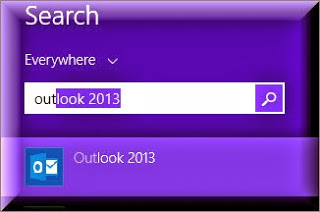Upgrading to a new office productivity
suite in a business scenario is almost as major an undertaking as upgrading to
a new operating system. It costs a lot of money to obtain the necessary licenses,
particularly for larger networks and, sometimes, you will even have to retrain
your staff to use the new software. Due to the major considerations involved,
you will want to think carefully before deciding whether or not your company
should upgrade to the latest version of Microsoft Office. Once its paid for and installed, there’s no going back!
suite in a business scenario is almost as major an undertaking as upgrading to
a new operating system. It costs a lot of money to obtain the necessary licenses,
particularly for larger networks and, sometimes, you will even have to retrain
your staff to use the new software. Due to the major considerations involved,
you will want to think carefully before deciding whether or not your company
should upgrade to the latest version of Microsoft Office. Once its paid for and installed, there’s no going back!
 |
| Upgrading to Office 2013 is a big step |
Advantages of Upgrading
Microsoft Office 2013 provides a number of
improvements and new features, some of which are particularly relevant to the
business world. One of these is the integration of cloud computing features.
With more and more businesses moving over to cloud storage and other Web-based
services, this is often a deciding factor when it comes to upgrading to Office
2013.
improvements and new features, some of which are particularly relevant to the
business world. One of these is the integration of cloud computing features.
With more and more businesses moving over to cloud storage and other Web-based
services, this is often a deciding factor when it comes to upgrading to Office
2013.
In Office 2013, you can save and open
documents directly to Microsoft SkyDrive, Microsoft’s free online storage
facility. Another major new cloud computing feature is the synchronization of
things like personal settings and custom dictionaries. If your employees
regularly work on different computers or they take work home with them, then
these cloud computing features can be enormously beneficial.
documents directly to Microsoft SkyDrive, Microsoft’s free online storage
facility. Another major new cloud computing feature is the synchronization of
things like personal settings and custom dictionaries. If your employees
regularly work on different computers or they take work home with them, then
these cloud computing features can be enormously beneficial.
The other major advantages, such as
improved touchscreen support and the new start screen, of Office 2013 are not
so relevant in the business world. Nonetheless, they are still welcome improvements.
Another feature worth noting, which may be of use in your business, is the
improved support for PDF documents which can now be edited within Word without
having to convert them first.
improved touchscreen support and the new start screen, of Office 2013 are not
so relevant in the business world. Nonetheless, they are still welcome improvements.
Another feature worth noting, which may be of use in your business, is the
improved support for PDF documents which can now be edited within Word without
having to convert them first.
Disadvantages of Upgrading
While Office 2013 is definitely an
improvement over its predecessor, the same disadvantages apply as they do when
upgrading to any major software resource. To upgrade all of the computers in
even a small company to the latest version can cost hundreds or even thousands
of dollars and there is also the time and work involved in the deployment to
consider.
improvement over its predecessor, the same disadvantages apply as they do when
upgrading to any major software resource. To upgrade all of the computers in
even a small company to the latest version can cost hundreds or even thousands
of dollars and there is also the time and work involved in the deployment to
consider.
One of the major changes in Office 2013 is
the improved compatibility with touchscreen devices. This, however, is not
likely to effect the business world due to the fact that keyboard and mouse
input remain vastly superior when it comes to productivity. The new interface
may not be welcomed by everyone, particularly for those who subscribe to the
philosophy that, if it ain’t broke, don’t fix it.
the improved compatibility with touchscreen devices. This, however, is not
likely to effect the business world due to the fact that keyboard and mouse
input remain vastly superior when it comes to productivity. The new interface
may not be welcomed by everyone, particularly for those who subscribe to the
philosophy that, if it ain’t broke, don’t fix it.
Compatibility with older formats created by
earlier versions of the Microsoft Office suite can also be a little patchy at times.
earlier versions of the Microsoft Office suite can also be a little patchy at times.
Is Your Business Ready to Upgrade?
Office 2013 is largely very similar to its
predecessor, so your staff are unlikely to need any additional training.
Productivity should certainly not be adversely effected due to staff not
finding the new software unfamiliar. However, it is also the fact that it is so
similar to Office 2010 both in terms of appearance and functionality that it
might not seem worth upgrading. If your business is happy with Office 2010,
then there is probably no need to upgrade at all, unless you find the
integration of cloud features important enough. If your business is still using
Office 2007 or earlier, then upgrading is a much better idea, particularly as support
for older products is becoming increasingly limited.
predecessor, so your staff are unlikely to need any additional training.
Productivity should certainly not be adversely effected due to staff not
finding the new software unfamiliar. However, it is also the fact that it is so
similar to Office 2010 both in terms of appearance and functionality that it
might not seem worth upgrading. If your business is happy with Office 2010,
then there is probably no need to upgrade at all, unless you find the
integration of cloud features important enough. If your business is still using
Office 2007 or earlier, then upgrading is a much better idea, particularly as support
for older products is becoming increasingly limited.

